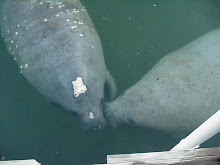The Colonel and I love to visit/tour/stay-in old, historic houses (or hotels). So, when we were traveling back home from Indiana, the last time we went there, we saw that Octagon Hall was just off the highway as we headed south.
Octagon Hall is in Franklin, Kentucky, just south of Bowling Green. It is listed on the Register of Historic Places.
In the mid 1840s a New England architect espoused the benefits of octagonal houses in a book he authored. He said octagonal houses had better airflow, strength and usable square footage. This book caused a fad to start and thousands of octagonal houses were built around the country. Most were built in New England and the upper Midwest. Approximately 83 are still in existence today. Octagon Hall is one of four surviving brick octagonal houses and the only one in Kentucky.
In 1847, Andrew Jackson Caldwell laid the first foundation stones (natural limestone blocks weighing up to1 1/2 tons) for his unusual house. Using handmade bricks from local soil and timber from his woods, he completed, with slave labor (Caldwell owned 25 slaves by 1865), his house in 1859.
Below is the picture of Mr. Caldwell and his second wife, Harriet Morton Caldwell. It hangs over one of the fireplaces in Octagon Hall. Caldwell's first wife, Elizabeth, died before the house was completed.
Andrew Jackson Caldwell was an ardent advocate of the Southern Cause and many Confederate soldiers found shelter in his house throughout the Civil War. There once was a cupola atop the house where soldiers (and family valuables) were hidden. The cupola had bee hives in it, so the Caldwells placed the soldiers in bee suits when they hid them there. The bees would deter the Union soldiers from searching the cupola. The cupola was removed in 1918 due to fire damage from a lightening strike two years earlier.
Octagon Hall was a strategic asset to both Confederate and Union forces. It was located on the L&N railroad and the Nashville Pike which made it ideally suited for an observation post and camp site. On February 13, 1862 approximately 8,000 Confederate soldiers camped at Octagon Hall on their march to Tennessee. Union forces occupied the area days later.
Mr. Caldwell died in 1866 of Typhoid Fever and his wife Harriet lived in Octagon Hall until 1918 when she sold it to Dr. Miles Williams, an osteopath from Nashville. Dr. Williams lived in the house until his fatal heart attack in 1954. His heirs made the house a rental property. Octagon Hall remained a rental property until The Octagon Hall Foundation was formed and obtained the building in 2001. It is dedicated to the restoration and preservation of the only eight-sided house in Kentucky.
Octagon Hall today is a museum and houses the Kentucky Confederate Studies Archive. The house contains Civil War artifacts, Native American artifacts, genealogical and historical research materials.
A plantation slave tag
Octagon Hall has been featured on The Discovery Channel and Syfy Channel. It is reported to be haunted (that made The Colonel and I even more interested in visiting). Billy Byrd, Executive Director of Octagon Hall, welcomed us on our visit to Octagon Hall. He told us we could open any door of the house on our self-guided tour (right up my alley...I always want to know what is behind a closed door). Billy also told us about the hauntings and his own personal experiences with paranormal activity in the house. One incident he relayed to us was the time he hung the picture of Elizabeth, the first Mrs. Caldwell, and heard the voice of a little girl say, "Mama" behind him. Billy was the only one in the house that day.
Elizabeth Caldwell was the mother of Mary Caldwell. Little Mary died at Octagon Hall when she caught fire as she was playing near the fireplace in the basement's kitchen. Billy Byrd thinks Mary's ghost uttered "Mama" when he hung the picture. Below is a picture of Mary and the kitchen she caught fire in.
There are also stories of people hearing the sound of a man moaning like he is in pain. The moans come from the area where the cupola once was. The reason for the sounds may be because the ghost of a Confederate soldier is said to haunt there. During the Civil War, the Caldwells reportedly hid the wounded soldier in the cupola. The soldier was shot in the foot and when the pain and pressure became too much he cut his boot in search of relief, which allowed the blood to flow more freely and he bled to death. In 1911 a split boot with bone fragments in it was found in the attic
The door to the attic and beyond to where the cupola once was is in a closet in Dr. Williams' old bedroom. I opened the door and snapped a picture. It felt a bit strange and creepy to look up into that space (part of me wanted to go up in there).
Soldiers were also hidden under the stairs at the front door. They gained entrance to under the stairs from inside the basement. Bullets and buttons from the Civil War have been found there.
Recently a tunnel was discovered and excavated in the kitchen's cupboard. It is believed that it was used to hide soldiers and may have been an escape route to a nearby cave entrance located near the railroad at the rear of the property. The false floor would be replaced and covered by cooking staples to disguise the tunnel's entrance. Billy Byrd told us that the museum was going to rent a ground penetrating radar unit to see how far and where the tunnel was on the property.
Mr.Byrd showed us a couple of pictures that some ghost hunters had taken when they spent the night at Octagon Hall. In the first picture below you see the image of two ladies in long dresses, standing in the doorway next to the ghost hunter in a wheelchair. In picture number two you can see the ghostly image of what looks like a soldier in the yard.
The Colonel and I did not see or experience anything paranormal during our tour of the house and grounds.
Here are pictures of little Mary's room. It is said the curtains move on their own at times.
Pictures of the other upstairs bedrooms.
Octagon Hall was used as a hospital for the wounded Confederate soldiers. There were mannequins set up to represent this (I bet they are creepy when the ghost hunters spend the night).
These are pictures of the rooms downstairs.
This room (pictured above and below) was once the parlor.
This room was once Dr. Williams' office.
There was a summer kitchen down a path behind Octagon Hall.
A weaver's house was also on the grounds.
The first Mrs. Caldwell, Elizabeth, little Mary and an unnamed baby boy are buried in a tiny graveyard behind the house.
Past this little graveyard, down a narrow path is the slave graveyard. Two unknown soldiers are buried just before the slave graveyard. One soldier was from Morgan's Men and died in 1864. The other soldier was from Wheeler's Cavalry and died in 1865.
Visiting Octagon Hall was a wonderful experience. Billy Byrd was very friendly and informative. Having free reign of the place was terrific (peeking in all those closed doors). It was a unique experience to tour the inside of an octagon house. I was surprised at the size of the rooms; indeed great use of square footage. Next time we head north...who knows...we may pay another visit to Octagon Hall.












.jpg)















































































I've never heard of the Octagonal Houses. Very interesting and the hauntings kind of creepy. Jenn
ReplyDeleteGet rid of the eerie mannequins, creepiness solved.
ReplyDeleteI live in Franklin, KY and have never been in the Octagon House but will now take a tour. And I so much agree; get rid of the creepy mannequins!
DeleteThis comment has been removed by the author.
ReplyDeletevisited last Saturday,so much history there.needs some preservation work to keep it available for future generations.we plan to volunteer to help out.
ReplyDelete